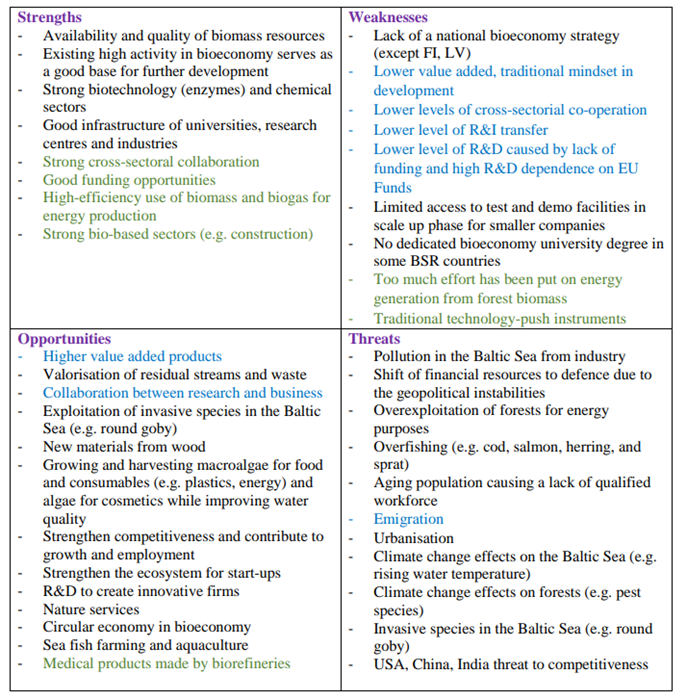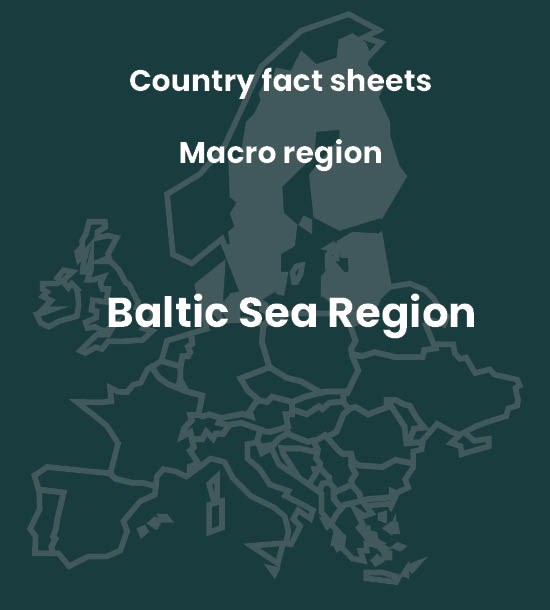The Baltic Sea Region (BSR), lying in the north-eastern region of Europe, consists of 9 countries (Denmark, Estonia, Finland, Germany, Latvia, Lithuania, Poland, Russia, Sweden), of which only Russia is not an EU Member State and is therefore not considered. In this report, however, also Germany and Poland – normally considered as part of the BSR – have been taken out of the analysis as they are covered separately by the reports analysing the Western and the Eastern European countries, respectively.
These countries are considerably varied in terms of the size and population. Table 9 shows the size and population of the BSR countries. The largest of the BSR countries, covering 447,430 sq. km, is Sweden, while Denmark is the smallest, having around 42,944 sq. km. The largest population (10.5 million people) lives in Sweden.
The second most populous country is Denmark, with ca 5.9 million inhabitants, and Finland comes in the third place, having a population of 5.5 million. The population in the remaining three countries each does not exceed 3 million and Estonia has the smallest population, of just 1.4 million. While the total area of the Baltic Sea region (around 1 million sq. km) represents 23.7% of the total EU-27 area, its total population (28 million) is only 6.2% of the total EU-27 population (Eurostat, 2023). Hence, the BSR has a large land area available for a relatively low number of inhabitants.
SWOT Analysis of the Baltic Sea Region
In the SWOT analysis below, an overview of the region’s strengths, weaknesses, opportunities and threats are provided. As you can see, the analysis shows among others that the Baltic Sea Region is rich in natural resources (wood, agriculture, fisheries), which it can provide to bioeconomy.
Existing high activity in bioeconomy (wood, agriculture, etc.), well-educated workforce, many capable institutions, expertise in innovation, and a strong tradition of intra-regional cooperation serve as a good base to start further development.

Below is a map summarising the main strategies, collaborative structures and policy instruments in the Baltic Sea macro-region (Estonia, Denmark, Finland, Latvia, Lithuania, Sweden).
Country fact sheets to be downloaded!
If you’re curious to know more about the bioeconomy sector in the Baltic Sea Region, you can read the recently published report called ”Report on macro-regions – Mapping of initiatives, structures, instruments and key challenges for EU’s macro-regions
